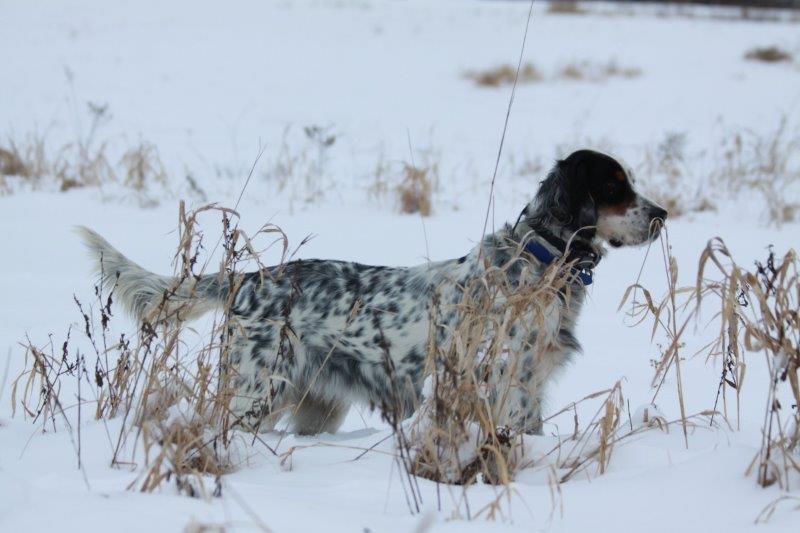Dec 7, 2023
PHOTO COURTESY OF JASON GOODING
Kennel dogs live outside in a fenced run with a dog house. In modern America, most dogs are house dogs living inside with their owner. In the 1950s and 60s when I first had a dog, the situation was reversed. Dogs were kennel dogs with but a few exceptions. I rode a bicycle and delivered the Daily Tribune in the afternoon to over a hundred homes. Dogs were everywhere. Dog days were when a female in heat drew a crowd from blocks around. I was viewed pretty much the same as the mailman; most dogs barked when I threw a paper into their front yard. A few took umbrage growling, attacking my bicycle intending to bite a leg. I rode very fast past these houses. All dogs had a doghouse in the backyard, some fenced, most not. One Saturday a month I collected for the home delivery service. The kennel dogs ignored me. The house dogs – there were only two – yapped at me through the door until their owner appeared. My childhood dogs, Jack, Jill, and Fella ran with the neighborhood crowd. We put them up at night in an outdoor kennel. Almost always when I yelled a name, my dog appeared within a minute or two. Drivers seemed to look out for them. I don’t recall a neighborhood dog ever getting run over.
Currently, I train three kennel dogs for Jason Gooding, the proprietor of Good Go Ing Kennels in Baldwin, Wisconsin. Lilly, Ruby, and Lexi are traditional English setter bird dogs, all female. They are a portion of Jason’s breeding stock. In exchange he allows me to use a couple hundred acres of restored tallgrass prairie and escaped upland birds. Also, the dogs and I hunt wild birds throughout the upper Midwest from September through November.
The arrangement fits me like a glove. I retired 20 years ago to spend my winters in warmer weather. My dogs live in large outdoor runs with warm dog houses year-round, except during fall hunting when they’re with me. Before this current arrangement, I always had a bird dog in my backyard for 30 years. I trained them myself. I fell in love with English setters. The primary purpose of this column is to tell you why they appeal to me.
The most important reason is that their singular purpose in life is hunting upland game birds. They appreciate the humans who feed and water them and the ones who exercise them daily. But their wild excitement and ostentatious affection are saved for the person who takes them hunting for upland birds – grouse, chukar, quail, or pheasant. The desire to hunt is bred into their bloodlines by three centuries of upland hunters, beginning in England. Awareness and productivity must be taught during an English setter’s first couple of years. The learning process is where a strong human bond develops.
During their early months, a puppy is intrigued by butterflies, flying birds, and all unfamiliar smells. They will point, chase and attempt to catch. Exposure to upland birds at this stage results in a relatively fast bird dog development over the next several months. Chase is a young dog’s reward. Next comes holding a point until the flush and introduction of the shotgun. A “started” dog takes about 18 months, while a “finished” dog takes 30 or more. Training is 2-3 days a week plus following around a trained dog during the fall hunting season. The reward for finding a bird becomes my shooting over a staunch point followed by a retrieve.
English setters are beautiful long-haired dogs with orange or black spots. They are regal. One has to earn the right to receive and give affection. They are friendly to all humans but with a distinct air of aloofness. I like their beauty, hunting abilities, aloofness, and affection. I have earned the latter by showing them the purpose of their amazing genetic hunting gifts. House dogs owners receive the same reward from living together. Most share it with a professional trainer. Kennel dogs are the territory of persons with multiple bird dogs–breeders, trainers, and me.
Jerry McAllister is a retired chemist, writer and avid outdoorsman who lives in northwestern Wisconsin on Big Sissabagama Lake. Once upon a time, he completed post-doc research at Iowa State University. All seven of his grandchildren – college age down to a baby born in 2023 – are growing up in Iowa.
Today’s breaking news and more in your inbox
Copyright © North Tama Telegraph | https://www.northtamatelegraph.com | 625 Second Street, P.O. Box 156, Traer, IA 50675 | Terms of Service

